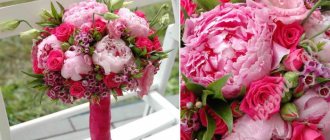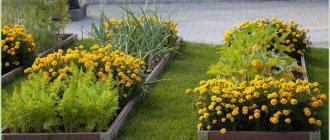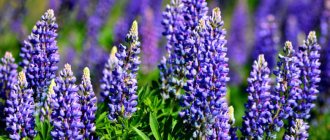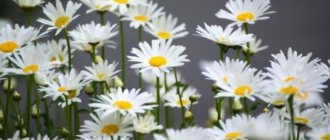It would seem that in the vast expanses of Russia everything is known about this beautiful wild flower. But not everything is so simple, and if we take a closer look at daisies, they will open up for us from a new, unusual side.
Even in ancient Greek and Roman treatises on nature, there is a description of this plant and its beneficial properties. In this review we will present photos of daisies and tell you some interesting facts about this amazing flower.
pharmaceutical camomile
The most common type of wildflower in Eurasia and North America was widely used in medicine and in the manufacture of medicinal potions back in antiquity.
And today chamomile, or as chamomile is also called, is the most popular medicinal plant. Chamomile therapy is used all over the world, and many components used in cosmetology are made from chamomile.
Appearance of chamomile leaves
Chamomile (in Latin Matricaria chamomilla or Matricaria recutita) is a small annual herbaceous plant that belongs to the genus Matricaria, the Asteraceae family. During the flowering period it looks like this:
Most often, chamomile is recognized by the characteristic structure of its inflorescences, in the middle of which there are small tubular yellow flowers, and along the outer contour of the receptacle there are white reed flowers. The size of the inflorescences is usually 2-2.5 cm, and the sepals are about 1 cm. At the same time, there are quite a lot of plants with similar inflorescences in nature, but, in addition to chamomile, only a couple more species are used for medicinal and household purposes.
On a note
In the inflorescences of Matricaria chamomilla, the color of tubular and reed flowers is only yellow and white. A combination of other shades is not found in this species. However, due to the characteristic structure of the inflorescences, other plants are also popularly called daisies. For example, heliopsis with variegated leaves and red marginal flowers is called yellow chamomile, which is completely incorrect from a botanical point of view.
You can distinguish chamomile from similar plants by knowing its morphological features.
Chamomile leaves in particular have a very distinctive shape. Their location on the stems and shoots is different. Chamomile leaves are simple, sessile - they do not have cuttings and they are attached directly to the stems, as shown in the photo:
On a note
Chamomile has simple leaves, but they are sometimes confused with complex leaves. The difference between these types is that simple ones have only one petiole and a leaf blade, which can be divided into several lobes, while complex ones have several leaf blades and petioles, and therefore we can say that they consist of separate leaves .
The shape of the leaves is broadly lanceolate or ovate, the blades are deeply dissected. At the base they are slightly expanded. The length can reach from 1.5 to 6 cm, but most often it is 2-3 cm. The width can range from 0.5 to 1.8 cm, but in most plants it is 1-1.5 cm.
When looking at the bush in general, chamomile leaves look similar to dill leaves.
The stems of the plant are erect, ribbed and grooved and hollow inside. They can reach a height of 15 to 60 cm. Their growth depends on the season, soil quality and other climatic conditions. At their base, the stems are usually branched into several shoots and leafy to the very top, where they are divided into peduncles with inflorescences. The stems and side shoots of the plant are almost bare, they have very slight pubescence.
It is also useful to read: Benefits of chamomile decoction, infusion and other preparations for the face
Here the picture shows a schematic representation of part of a chamomile bush, in which the features of its stems and root system are clearly visible:
The size of the leaves of chamomile is very small, which is clearly visible in the photograph of the bush:
The venation type of chamomile leaves is pinnately-marginal. The leaves themselves are double or triple pinnately dissected into narrow linear lobes. Their shape is subulate-pointed, and their width does not exceed 0.5 mm. Due to the very small size, this feature of the leaf blades is almost impossible to examine without special equipment.
In general, we can say that the leaves are alternate, small and very thin. Thanks to this shape, they can be compared to dill. This similarity helps to quickly distinguish chamomile from many similar plants.
The lower leaves of chamomile are slightly different from the upper ones. They have a semi-stem-encompassing base. You can see what it looks like in the photo:
During the flowering period, the stems and leaves of an adult bush have a rich green color. In young plants it is light green. As the bushes wither, the color fades, and by the end of the season they become completely yellow. The color of the plant begins to change from the base.
It is noteworthy that the first leaves of a young plant are very different from those that appear later. The very first two leaves grow oppositely on the stem and have an oblong shape. As a rule, they are tripartite, with the middle lobe usually larger than the marginal ones. The third and fourth leaflets also have opposite leaf arrangements. Their venation is pinnately dissected and their shape is lanceolate.
Here the photo shows chamomile seedlings about two weeks old:
In about a month and a half, 6-10 leaves appear on the seedlings, which gradually take on the shape characteristic of chamomile. During this period, the plant most closely resembles dill shoots:
After this, the stem quickly begins to grow in height and branch out. Inflorescences on peduncles usually appear 50 days after the plant emerges.
Chamomile can be either a winter or spring plant. This means that in the wild, seedlings appear in late summer or autumn. By the onset of cold weather, the plant develops a rosette of leaves, and increased growth of the bush begins in the spring after warm weather sets in.
In most cases, chamomile leaves look the same regardless of where it grows. Moreover, in unfavorable conditions for it, their density and size may change. The shrub grows best on loamy soil. In this case, more than 20-30 inflorescences can grow on it. At the same time, when growing on acidic calcareous soil, few inflorescences are formed on the bushes, and leaves, on the contrary, develop more intensively.
The number of leaves is also influenced by the length of daylight hours and the fact whether the shrub grows in the sun or in the shade. Under experimental conditions, it was found that in plants that are exposed to light for less than 10 hours, very few inflorescences are formed, while the stems become densely leafy.
It is also useful to read: Differences between chamomile and similar species
In addition to external signs, chamomile leaves have other distinctive features. First of all, this is the specific smell that they emit. If you tear off a leaf and rub it in your hands, its tart aroma should remain on your fingers.
Nivyanyk
In Russian etymology, the name of this type of chamomile comes from the word “niva”, but from the ancient Greek language the word is translated as “white flower”.
A flower with white petals is widespread in Europe and some regions of Asia. It was also introduced and established itself in North America.
Pests and diseases
With proper care, flower growers do not encounter any difficulties, but if the rules are not followed, problems will arise regularly.
Bush daisies often suffer from the following diseases:
- Powdery mildew appears as a white coating on the stem and leaf blades. If you do not take action, the plaque soon begins to turn brown. Afterwards the plant dries out and dies. Treating parts of the flower with fungicidal preparations will help correct the situation.
- Gray rot, this problem can be identified by the brown spots that appear on the leaves and stems. At the beginning of the development of the disease, they are almost invisible, but spread quickly and can affect large areas.
- Rust on daisies, the primary sign of the disease is the presence of dark orange spots on the leaf on the front side. Fungal spores are usually found on the reverse side.
Special remedies will help get rid of fungal diseases. Fungicides called Fundazol and Kuproxat have proven themselves well.
Harmful insects are also not a rare guest on garden daisies. Most often, gardeners encounter wireworms, star-winged flies and aphids on plants. They get rid of them with the same fungicides.
Rust is easily identified by pads with fungal spores on the back of the leaf blade of daisies
Chamomile Pyrethrum
This type of garden chamomile differs from its sisters in the shape of its petals and color. Pink, red-purple and coral flowers can be found in the garden.
Breeders have developed various varieties of Pyrethrum. This is the Golden Ball variety with bright golden inflorescences. Gardeners also widely plant Snow Globe with spherical white inflorescences against a background of green foliage.
Varieties and characteristics
Chamomile has been cultivated for over 500 years. During this period of time, many new varietal representatives have appeared, but not all are popular among gardeners.
There are species that are found everywhere:
- Nivyanik is a classic perennial garden chamomile; planting and caring for it in the open ground is not difficult. The flower grows up to 70 cm, and the buds reach a diameter of 7 cm. Nivyanyak blooms for almost two months, and the first flowers appear at the beginning of the first summer month.
- Northern Star is one of the leading perennial varieties among flower growers. The plant has a high level of frost resistance and loves sun and moist soil. The variety is easy to propagate; the seeds germinate within the third week after sowing.
- Princess - low, lush bushes are suitable for planting in open ground, so they can often be found in park areas and borders. Good frost resistance allows you to decorate garden areas with flowers. The diameter of the buds is approximately 8 cm, the bushes are literally strewn with flowers.
- Pyrethrum - most representatives of this chamomile are small-flowered, the buds do not exceed 6 cm. Although there are giant specimens that grow up to 80 cm in length, and the diameter of the flowers exceeds 12 cm. These are winter-hardy and shade-tolerant varieties with long and abundant flowering.
Colored daisies are very beautiful flowers, attracting with their unusual appearance and color of the petals. They are not traditionally white, but pink, burgundy, yellow and crimson. These perennial hybrids continue to bloom throughout the season.
The most popular colored representatives are “Erigeron”, “Paradise”, “Golden Ball”.
Each variety has its own characteristics in cultivation and requirements regarding conditions. When to plant perennial chamomile depends on the age of the plant, but usually this is done every three years; it is not worth keeping the plant in one place for more than five years.
The “Princess” variety is compact in size, the height of an adult bush does not exceed 30 cm, these flowers can be grown in a flower pot
Flower of Love
Even in Ancient Rus', the magical properties of this flower were widely known. But they called it completely differently than it is now. Our ancestors knew it under the names “Romanova grass” or “navel”.
There are also popular, romantic names - “bachelorette party”, “sunflower”, “forest maryasha”.
Since ancient times, magical fortune-telling on chamomile petals “loves - does not love” has come to us.
Reproduction methods
There are several ways that daisies reproduce. The first option is to divide the bush, which has reached three years of age, into several separate parts. Then put each one in its own separate place.
The second method of propagating chamomile involves sowing seed directly into the soil at the dacha or in the garden. But it is better to plant seedlings in open areas. The chance that the plant will adapt to the new environment in this case is much higher.
It is best to replant and divide shrubs in September.
Mature shrubs quickly take root and adapt to the new environment. In addition, they are not afraid of the cold. Transplanting in the fall will ensure the buds set in the spring, which means you won’t have to wait a whole year for the long-awaited flowering.
You can collect planting material yourself.
Instructions on how to collect chamomile seeds:
- Even in the summer, you need to choose the variety you like, the bush must be healthy and strong;
- Next you need to let the bud bloom, it should dry completely;
- wait until the core changes color from yellow to deep brown;
- it is important to wrap the flower in gauze;
- then you should press in the middle, the seeds will easily disintegrate.
After collection, the seeds are dried and removed before sowing. Planting material has a high germination rate.
Chamomile seeds look like this
In art
A field of daisies has always been a source of inspiration for painters. And besides the photo, you can admire the image of the forest beauty in the paintings.
The field of daisies against the backdrop of the rising or setting sun is especially impressive. After all, a sunny flower can rightfully compete with the heavenly body in tenderness and warmth.
Features of garden care
Seedlings are transplanted into open ground at 1.5 months of age, after the threat of return of spring frosts has passed. When planting in a permanent place, the plant should form a powerful root system and a strong stem. Planting and caring for large perennial garden chamomile is not difficult; it involves watering, fertilizing and removing faded inflorescences.
What conditions do daisies like?
Chamomile in the garden prefers to grow in a sunny place, with neutral or limestone soil. Before transferring seedlings to the flower garden, it is important to prepare the planting hole in advance. To do this, the soil is dug up and fertilized with a mineral complex. A hole is dug to a depth of 20-30 cm, and the interval between plantings is maintained at about 40 cm.
The seedlings are removed from the pot by transfer and placed in the hole. The plant is covered with earth, the top layer is compacted and spilled.
What is the plant afraid of?
Chamomile is an unpretentious plant, but if agrotechnical rules are not followed, flowering will not last long. The plant will grow and develop poorly:
- in the shade - the inflorescences will be small and the flowering will not last long;
- when grown in an area with shallow groundwater - since chamomile has a shallow root system, with constant contact with water the roots will begin to rot and the plant will die.
Watering
Immediately after transplanting the seedlings to a permanent place, they need regular watering. But after the plant takes root and begins to grow, irrigation is reduced and carried out only in severe drought.
Mulching
To retain moisture and stop the growth of weeds, the soil is mulched. Peat, straw, and mown grass are used as mulch.
Mulch will retain moisture
Loosening
After each irrigation, to avoid the appearance of an earthen crust, the soil is loosened. But since the root system is located superficially, loosening should not be deep so as not to damage the fragile roots.
Feeding
Feeding is carried out annually. Fertilizers are applied 2 times a year:
- In early spring, ammonium nitrate is scattered between the bushes (20 g per 1 m²).
- When buds appear, urea, diluted strictly according to the instructions, is added under bushes with faded leaves.
Important! Fertilizer is applied only to moist soil. Otherwise, the plant may get root burns.
Transfer
An adult bush is replanted by division every 5 years. But in order for the plant to be powerful and the inflorescences to be large, it is better to carry out the procedure annually. The transplant is carried out in cloudy weather, in the last days of September.
Natural beauty
If you present a bouquet of daisies or even one flower as a gift, you will thereby emphasize the natural beauty of your chosen one.
They are suitable for girls and women of any age, highlighting their natural beauty. Chamomile flowers are often used as an accessory in hairstyles or as a decoration element on clothing.
Care after flowering
After flowering, care consists of collecting seeds and pruning the bush. Seeds remain viable for 2-3 years.
Chamomile seeds
Collecting seeds
To collect the seed, you need to wait until the large flowers are completely dry. After this, they are laid out in a dry, well-ventilated place to dry. When the inflorescences are completely dry, the seeds are removed from the central tubular flowers onto paper. After purging from foreign debris, the seed is poured into a paper bag and put away in a dark, dry place.
Important! Terry and varietal daisies cannot be propagated by self-collected seeds, since the future plant will not retain its parental characteristics.
Preparing for winter
Despite the fact that garden chamomile is cold-resistant, it is better to prepare it for wintering in the first year. For this:
- The plant is watered abundantly and fed with potassium-phosphorus fertilizers.
- The entire above-ground part is cut off, leaving stubs of 5 cm.
- For the winter, the roots are covered with sawdust, dry leaves or non-woven material.
An adult, strong bush does not need shelter for the winter. The exception is regions with harsh climates.
Positive emotions
The most beautiful, cheerful and delicate wildflowers are often compared to a smiley face. In any case, this flower gives only positive emotions.
Even in childhood, magnificent wreaths were made from daisies, and today screensavers on a phone or computer give their owners a good mood.
And a bouquet of unpretentious flowers will decorate any living room and add light and space to your home. A bouquet of daisies will be a rather original surprise for a girl with a deep inner world, use it. The main thing is to make a beautiful composition out of flowers. Follow the link to find the most beautiful bouquets, including photos of chamomile bouquets.
Classification of popular types
Rose Geisha (Geisha) - growing features
Chamomile is divided into several types, but the most popular are: meadow chamomile, Kuril nivaria, marsh and greatest. They are all similar in appearance, but have certain differences:
- flower size;
- place of growth;
- bush height;
- flowering duration.
Meadow chamomile (Leucanthemum vulgare)
A perennial plant up to 90 cm high. The plant forms single inflorescences-baskets with a diameter of 6-7 cm. The marginal petals are snow-white, single-row, the small core is lemon-colored. Flowering begins in June and lasts about 1.5 months. Grows in meadows and open forest clearings.
Kuril cornflower (Leucanthemum kurilense)
The plant is small and grows in the east. The Kuril and Japanese islands are considered its homeland. Grows on stones, cliffs, sandy seashores. Kuril nivet reaches a height of 20 cm; at the beginning of flowering, a single inflorescence-basket appears on the plant, with white single-row petals and a yellow core. The diameter of the flower is about 8 cm.
Swamp cornflower (Leucanthemum paludosum)
This species grows in southern Spain and Portugal. The plant has a second name - marsh chrysanthemum. The bush is small, reaching a height of up to 25 cm. The inclined or erect shoots are covered with rich green, alternately arranged leaves. At the beginning of June, the bush is covered with lush inflorescences-baskets, small in size. Flowering lasts until the first frost.
Swamp cornflower
Leucanthemum maximum
A beautiful flowering species that arrived in Russia from the Pyrenees. The plant forms a large number of shoots up to 100 cm and a shortened rhizome. The inflorescences are large, reaching a diameter of up to 12 cm. There are double and semi-double chamomile. The snow-white petals are arranged in several rows, as a result the flower looks fluffy and resembles a chrysanthemum.
This species differs from others in its late flowering. The first inflorescences appear in the second half of July and last until the first frost. The species has a drawback - it is fragility. Due to prolonged flowering, the plant spends a lot of energy, as a result the flower becomes smaller and weaker.
Important! This variety is not resistant to unfavorable conditions, so it needs regular updating.
Thanks to the work of Russian scientists, the largest variety of cornflower – Pobeditel – was developed. It is resistant to sudden temperature changes and long flowering. The tall bush forms large inflorescences, 12 cm in size. The variety is unpretentious and grows in one place for about 10 years.
Summarize
A romantic and mysterious flower throughout the history of Mankind, people have used it for various purposes. In Ancient Egypt it was used in ceremonies dedicated to the Sun God - Ra. In Rus', all kinds of diseases were treated with the help of “Romanov color”. In Medieval Europe, ingredients for incense were made from the flower.
Looking at the photo of a chamomile, without exaggeration, we can say that this is the most delicate flower, a symbol of beauty and purity.
Medicinal properties and contraindications
Due to the high content of valuable components, field chamomile has a whole range of beneficial properties. With the help of this plant it is possible to achieve the following effects:
- improve appetite and normalize food absorption;
- disinfect skin lesions;
- strengthen the immune system and protect the body from germs and infections;
- relieve allergy symptoms;
- reduce emotional stress;
- cope with inflammation, spasms and bleeding;
- eliminate female diseases of the uterus and ovaries;
- normalize stool in case of poisoning;
- restore proper functioning of the kidneys, stomach, liver;
- cleanse the skin, make it smoother and velvety;
- stimulate hair growth and activate the functions of hair follicles.
Chamomile tea brings great benefits to the body.
Although chamomile has many beneficial properties, it also has a number of contraindications.
The main restrictions include the following:
- Pregnancy. The plant can provoke the synthesis of estrogens - female sex hormones. Therefore, its use can cause changes in hormonal levels. During lactation, you also need to be careful when using chamomile-based products.
- Chronic pathologies. If they are present, you should definitely consult a doctor. For some diagnoses, chamomile cannot be used.
- Individual intolerance. In this case, there is a risk of swelling and bronchospasms.
Excessive and uncontrolled use of chamomile-based products can cause headaches, vomiting, and bleeding. There is also a risk of increased blood pressure.
It is best to collect flowers on the 5th day after blooming.











